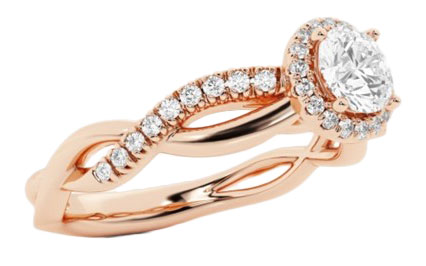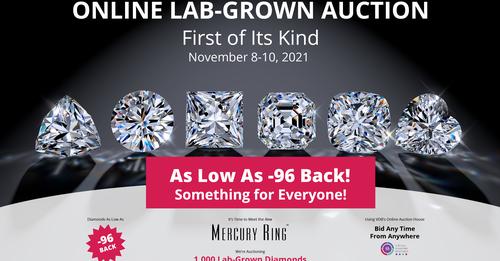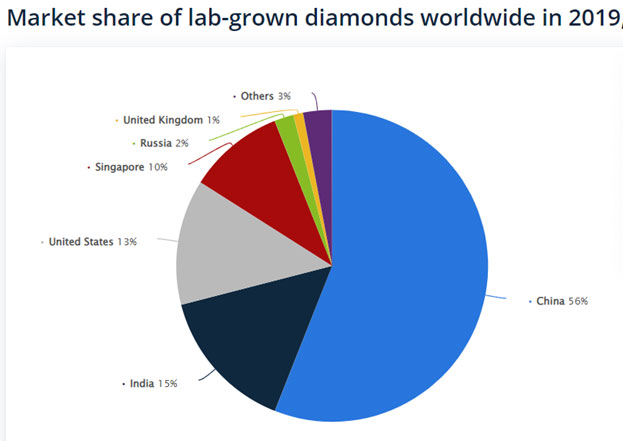Lab-Grown Diamonds are coming your way
How do we know?
After resisting lab-made diamonds for several years, some 60% of jewelers now choose to carry them.
Consumers are asking for lab-made diamonds and an increasing number of diamond growing facilities around the world are supplying them.
Another strong indication that created diamonds have a sparkling future is that De Beers is now seriously involved.
De Beers
For decades De Beers cornered the market in mined diamonds, controlling supplies to create an artificial scarcity that positioned diamonds as rare and therefore expensive. Although De Beers has produced diamond for industrial use since the 1950s, it fought the trend toward lab-made diamonds for jewelry, belittling lab products as not real diamond and no match for the romance of diamonds mined from the earth.
The ground shifted quite a bit in 2018 when De Beers introduced Lightbox, its own lab-made diamond brand. These diamonds, of ¼ c, ½ c or 1c, sold at the rock bottom price of $800/carat and were set in fashion jewelry of silver or 10k gold. Lightbox marketed the product as sort of diamond light, “fun pieces of jewelry,” appropriate for less momentous occasions such a graduation or 16th birthday.
Jewelry marking important events, like an engagement or wedding, would remain the preserve of mined diamond, which was De Beers’ main focus.
Lightbox dismissively said its lab-made diamonds did not require grading reports because the stones could be produced in uniform high quality.
This year there’s been some serious back-pedaling. DeBeers has now introduced a range of higher-quality lab-grown diamonds under the name “Finest.” These diamonds, said to be D-F in color, VVS clarity and excellent cut, sell for $1,500/carat and are available in sizes from one to two carats.
Consumers can buy Lightbox “Finest” diamonds set in De Beers jewelry, or they can purchase the stones loose and have them set in jewelry of their choice by their own jeweler. Even in bridal jewelry.
Lightbox “Finest” diamonds do come with a grading report—though the grading is by De Beers, not by an independent grading lab.
Affordable luxury
Customer demand has been gradually building for this affordable alternative to mined diamond but brick and mortar jewelers are struggling. Foot traffic is down. Sales have been lost due to lack of inventory or delays in delivery, while potential customers increasingly browse online.
Now jewelry wholesalers and retailers can electronically access an immense virtual inventory by searching for diamonds available anywhere, based on any criteria—carat weight, shape, price, etc.
Lab-made diamonds are part of this picture.
For three days in November, Virtual Diamond Boutique advertised the “first ever” auction of 1000 “high-end,” loose lab-grown diamonds, all 1 carat or larger. Gem retailers could view and bid via an app specific to this auction.
The supplier of the lab-grown diamonds, Mercury Ring, also manufactures jewelry, which it sells with mined or lab-made diamonds. Meanwhile, Pandora, the world’s largest jewelry company by volume, had decided to add lab-grown diamond jewelry to it repertoire and forego mined diamonds altogether.
Who makes lab-made diamonds?
We could give you some names, but there are dozens of diamond manufacturers already and the number is increasing.
Also, the maker of the diamond is not necessarily the name you’ll see on the appraisal or the docs that come with the sale. For example, De Beers sells diamond under the names Forevermark (mined diamond), Lightbox (lab-made) and Finest (better quality lab-made).
Diamond-growing labs are located in many countries, and their wares are sold around the world. More than 50% of lab-grown diamonds are produced in China.
Not all diamond makers are above-board.
Some makers are proud of their product and inscribe their name on their stones, but others do not. Stones coming from unregulated sources are likely to have no inscriptions, no documents and no brand name to protect. The diamonds may also be of poor quality. In any case, inscriptions can be removed and lab-made stones passed off as mined.
GIA has received for grading parcels of mined diamonds that have lab-made stones mixed in. Industry observers assume that this mix is done deliberately, to see whether GIA can detect the lab-mades.
If a lab-grown diamond were to be sold and priced as a mined diamond, it would defraud both the purchaser and the insurer settling a claim.
Is there a lab report—and who’s the lab?
There are many unreliable labs, producing certificates with unreliable gem grades and inflated valuations. Some are completely fake labs, names on the cert but no address or internet presence.
All scheduled diamond jewelry should have a grading report from a reliable independent lab.
GIA, AGS and GCAL all produce reliable lab reports for man-made diamonds as well as mined diamonds. Use the links below to verify reports you receive.
Jewelry purchased abroad may have no paperwork, or have appraisals or certificates with inflated qualities as well as inflated valuations. Retailers in tourist sites know customers will not be able to verify the quality before returning home.
Jewelry purchased at flea markets and other second-hand sources may have bogus appraisals or certs, many of which can be purchased online.
De Beers “Finest” diamonds come with a grading report—from De Beers. This producer probably values its reputation enough not to fabricate the gem qualities, but it would be better if the gem had a report from a reliable lab independent of the maker and retailer.
How important is all that for the insurer?
Lab-made diamonds sell for much less than mined diamonds. That’s just the way it is. Making diamond gets cheaper as technology improves; mining diamond will always be costly because of the heavy operations involved and because quality diamond in the earth is a limited resource.
Respected industry analyst Paul Zimnisky predicts that the market for lab-grown diamond will double in the next four years. He believes it’s likely that ultimately more created diamonds will be sold than mined diamonds.
A few years ago, created diamonds were priced 15-20% lower than mined diamond. Today, estimates put the difference at 30-50+%. Zimnisky sees the price falling to 75% below mined diamond. “The phenomenon of consumers spending thousands of dollars for lab diamond jewelry will be short lived,” he predicts.
FOR AGENTS & UNDERWRITERS
If lab-grown diamond is passed as—and priced as--mined diamond, the appraisal valuation will be grossly inflated. It’s best to ask for the sales receipt, which will more likely reflect the value of the stone.
The lower pricing for lab-made stones also affects the pricing of mined diamonds, since they compete for market share, so it’s important to keep valuations updated. This goes for policies already in place as well as for new coverage.
In general, do not rely on lab reports (diamond certificates, etc.) that carry a valuation. Such documents are sales tools, not unbiased assessments.
A diamond of one carat or more should have a grading report from a reliable lab. In addition to giving details on the 4 Cs and on any gem treatments, the report should also state whether the gem is mined (also called "natural," though this is a disputed term) or lab-made.
We recommend the following labs, and you can use these links to verify reports you receive.
GIA Report Check
AGS Report Verification
GCAL Certificate Search
Note that grading labs may offer several reports, with higher-priced reports giving more information. (See, for example, GIA's reports on lab-grown diamonds.) Be sure the report you get has all the necessary information.
Also, these labs change the look of their reports from time to time, so a different look doesn’t necessarily mean a bogus report. Always verify a report using the lab’s online verification tool.
All scheduled jewelry should have an appraisal from a reliable and trained gemologist appraiser who is independent of the seller. A lab report alone is not sufficient, since it describes only the gem, not the jewelry, and reliable lab reports do not give valuation.
The best appraisal includes the JISO 78/79 appraisal form and is written by a qualified gemologist (GG, FGA+, or equivalent), preferably one who has additional insurance appraisal training. One course offering such additional training is the Certified Insurance Appraiser™ (CIA) course of the Jewelry Insurance Appraisal Institute.
FOR ADJUSTERS
Mined diamond has a substantially higher valuation than lab-made diamond. If the appraisal or lab report does not explicitly state whether the gem is mined or lab-grown, use every means possible to determine which it is.
Deliberate non-disclosure is always possible.
Gem-grading labs have received parcels with lab-grown diamonds mixed in with mined gems. How many lab-made stones have not been "caught" and are out in the marketplace being sold, and priced, as mined diamonds? The potential for fraud and overpayment on claims is enormous.
Sales receipts and proof-of-payment docs are often helpful in establishing whether a diamond is mined or lab-made.
Take note of brand names on the docs, as some names may indicate producers or retailers of lab-made stones.
Some lab-grown diamonds are inscribed with the name of the manufacturer, though others are not. An inscription may also identify a color-treated stone, identify a branded cut, or carry the lab report number. In short, inscriptions on the gem can supply important value information, and they are visible only under 10-power magnification.
©2000-2024, JCRS Inland Marine Solutions, Inc. All Rights Reserved. www.jcrs.com





